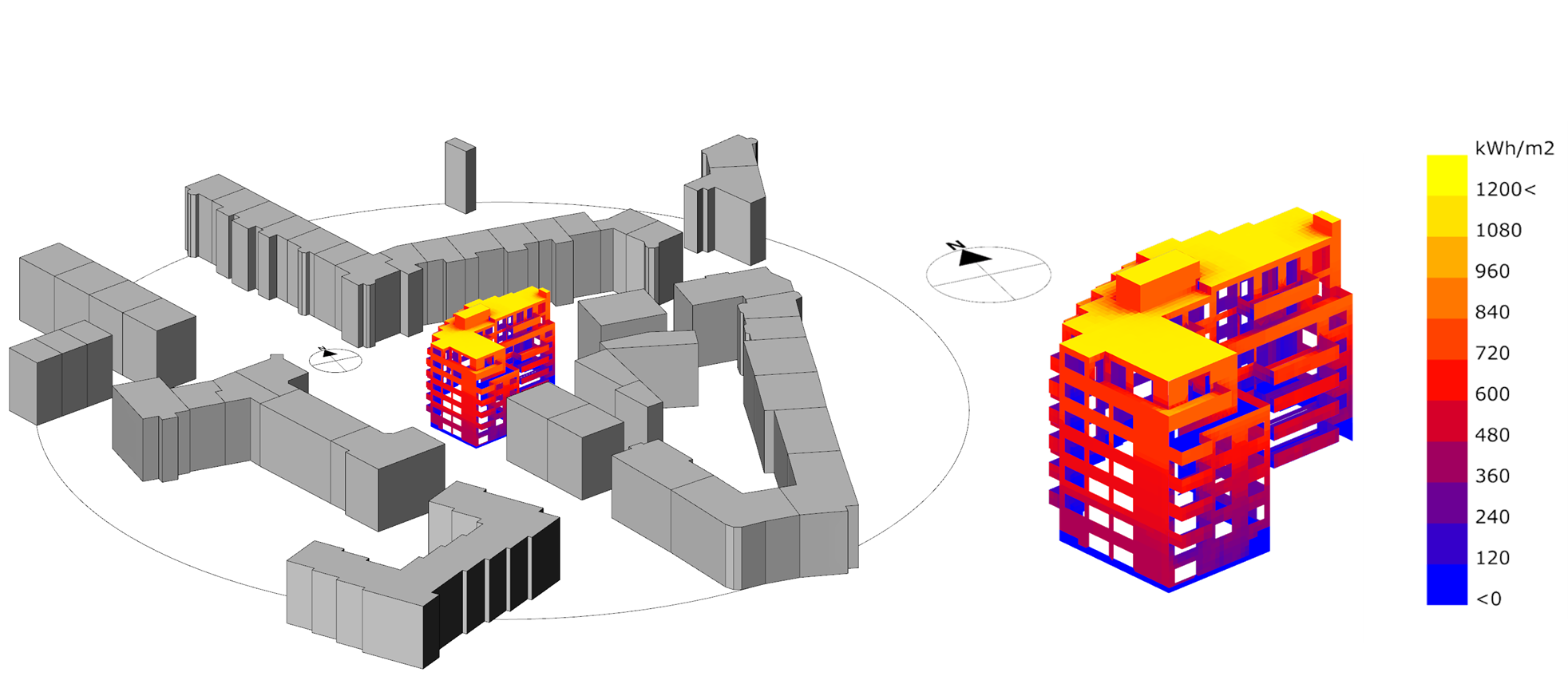[POW] Powering the City
Urban Building Integrated Photovoltaics

Globally, 80% of energy is consumed primarily in urban areas today, due to urbanisation. The transition towards renewable energy systems to power future low-carbon cities is crucial in reducing greenhouse gas emissions, mitigating global warming, as well as increasing liveability in cities.
Building Integrated Photovoltaics (BIPV) offers renewable energy to be generated on-site and prevents additional sealing of natural ground, potentially replacing traditional building elements. Switching from centralised, fossil-fuelled to decentralised and renewable electricity generation, however, also redefines the relation of cities to their hinterland with respect to energy. Current developments in technology, aesthetics as well as decreasing costs provide the grounds for mass deployment of BIPV in urban settings to optimise the use of solar energy, for both building retrofit by replacing traditional building facade elements and in new developments.
The objective of the Powering the City module is to develop a holistic, multi-scale and interdisciplinary approach for assessing large scale deployment of BIPV in urban contexts under different climatic, socio-economic and architectural / urban conditions. The team will use Zurich and Singapore as exemplary and complementary case studies.
The following research questions will be investigated:
- How can, on existing buildings, both building retrofit potentials and solar yield be estimated realistically, taking into account the urban context?
- How can the utilization of solar electricity be maximized (self-consumption) by sharing, heat/cold generation and storage (sector coupling)?
- What are localized (BIPV) envelope construction systems (retrofits and new constructions; heating context Zurich and cooling context Singapore) that balance embodied vs. operational emissions.
- What are aesthetic / urban design implications of maximizing solar production in existing contexts?
- What are economic drivers and barriers to push solar retrofit, what are interactions between city and hinterland?
Investigating these research questions will lead to following deliverables:
- Data-driven, contextual models for demand assessment (including occupant and mobility behavior),
- Engineering models for BIPV integration and assessment (LCA, cost, architectural/urban design),
- User studies on social acceptance and the impact of energy policies (e.g., nudges) on user behavior,
- Toolboxes for the generation and assessment of BIPV systems (including sector coupling: thermal, electricity and mobility) of urban blocks and districts, and
- Application of the toolboxes and models to case studies (retrofitting and brown field).
Being project partners, the team will interact with public stakeholders and agencies to provide feedback and to be trained on the toolboxes. Results will be published in peer-reviewed scientific journal publications in leading journals in the different fields and international conferences.
The results and learnings of the project will be synthesized in a book publication to address a broader audience. They will contribute to reducing CO2 emission in urban realms by providing a holistic understanding of impacts of large-scale BIPV deployment.
Furthermore, the results will support improving the resilience of cities towards pandemics such as COVID-19, stressing the relevance of a localized energy infrastructure, energy self-sufficiency and autarky. Within the cluster, our work links to the modules of A1: Circular Future Cities (LCA perspective) and A3: Dense and Green Cities (building / urban typologies and envelope).